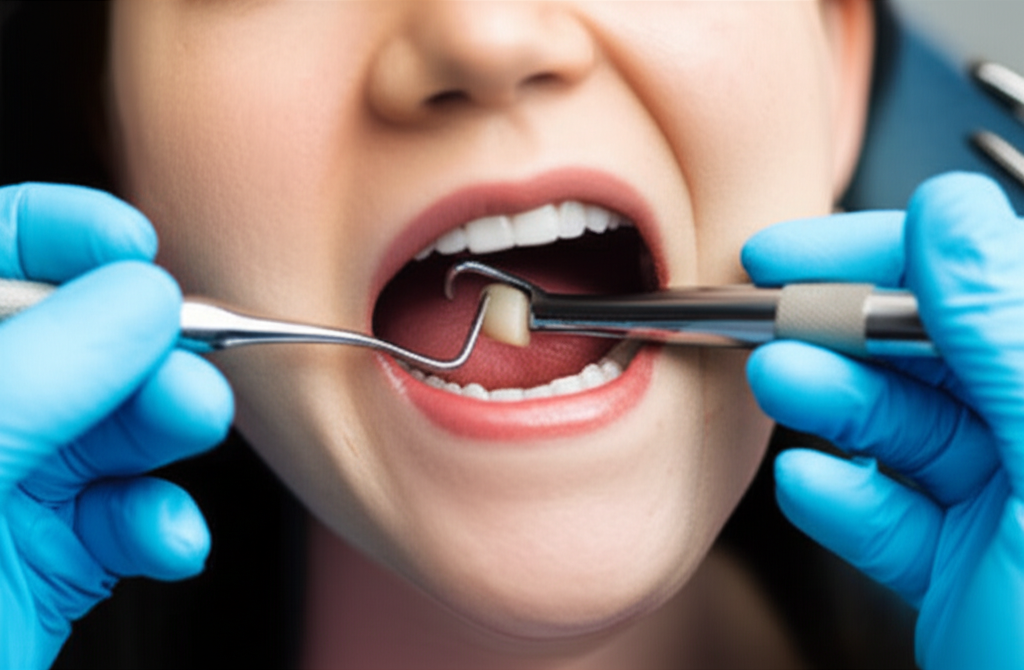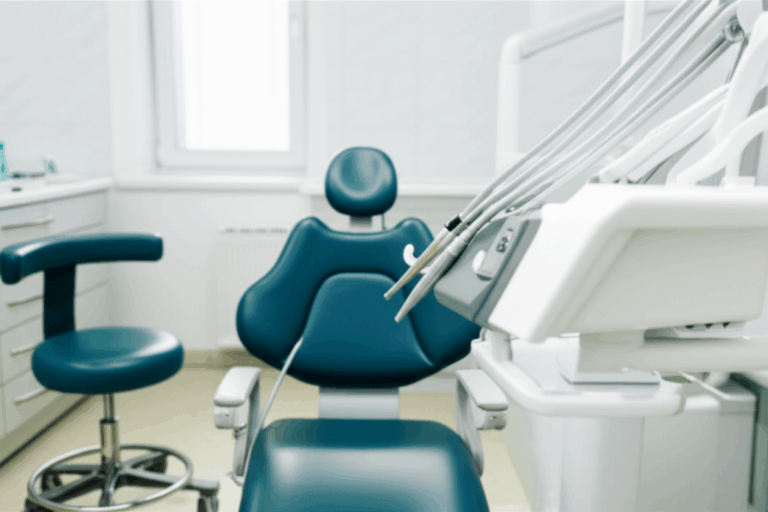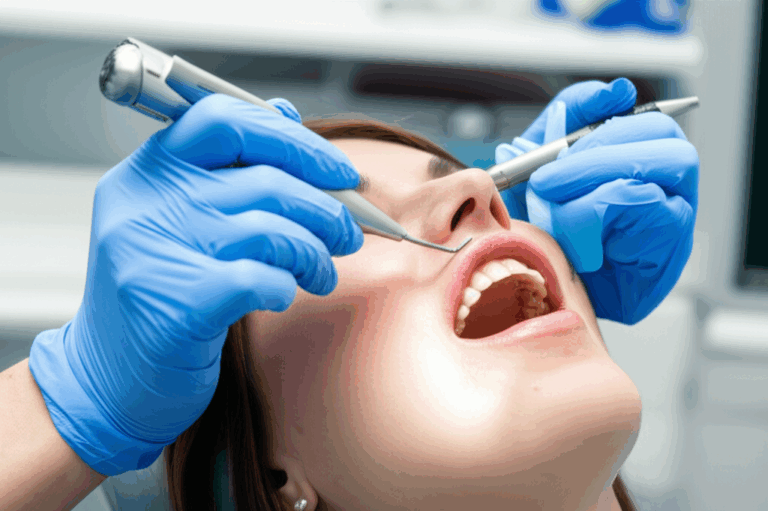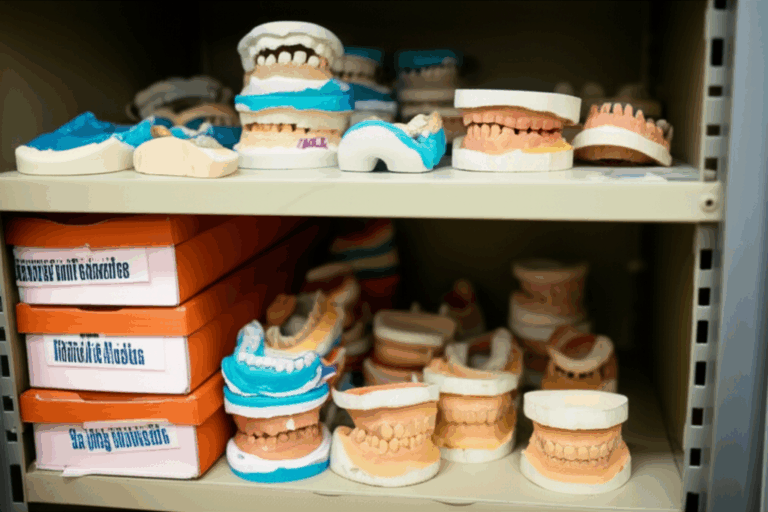
Tooth Extraction Explained: A Dentist’s Comprehensive Guide to Removing a Tooth
Have you ever wondered what happens when a dentist pulls out a tooth? Maybe you need a tooth removed soon, or someone you care about is facing this common dental procedure. This guide will walk you through every step in simple English. It explains why you might need an extraction, what happens during the appointment, how to recover safely, and how to avoid problems. If you want to feel confident and ready about tooth extraction, keep reading—you’re in the right place!
Table of Contents
1. Introduction: Why Learn About Tooth Extraction?
You might feel nervous about going to the dentist, especially if you hear you need a tooth pulled out. It’s normal to ask questions. I’ve been there myself, worrying about pain, how long I’d be sore, and what food I could eat after.
Knowing exactly how tooth extraction works can help you feel less scared. Understanding each step helps you get ready, follow care directions, and get better quicker. Looking after your teeth takes teamwork—dentists, dental labs, and you all working together!
2. When Does a Tooth Need to Be Pulled?
Tooth extractions aren’t something dentists do unless they really have to. Most dentists want to keep your real teeth if they can. But sometimes, a tooth needs to come out. Here are some main reasons you might need a tooth taken out:
Bad Decay or Cavities
Sometimes, a tooth is so rotten that a simple filling or even a crown won’t fix it. If the hole goes down to the tooth’s root and causes pain or infection, pulling the tooth might be the best choice.
Serious Gum Disease
Your gums keep your teeth in place. If gum disease eats away at the bone, your teeth may get loose. In these cases, taking the tooth out can stop the infection from spreading.
Crowded or Impacted Teeth
Wisdom teeth are often “impacted,” meaning they don’t come up straight or get stuck under the gum. Dentists also pull healthy teeth if there’s not enough space, like before getting braces.
Abscessed or Infected Teeth
If a tooth’s root is badly infected and antibiotics or a root canal won’t help, taking it out stops the infection and lets your mouth heal.
Broken or Chipped Teeth
If a tooth breaks so badly it can’t be fixed, like in a sports accident, your dentist will say it should be pulled.
3. What Are the Types of Tooth Extractions?
Simple Extractions
These are for teeth you can see above the gum. A regular dentist usually does this using local numbing medicine. They loosen the tooth with a dental tool called an elevator, then pull it out with forceps.
Surgical Extractions
Sometimes, the tooth is under the gums or broken off near the bone. The dentist or oral surgeon will cut the gum, and might take out some bone or break the tooth into pieces to get it out.
Both ways are safe and common. Your dentist will tell you which is right for your tooth.
| Type | What It Means | Who Does It |
|---|---|---|
| Simple Extraction | For teeth you can see and reach easily | General Dentist |
| Surgical Extraction | For teeth that are hidden or broken off | Oral Surgeon or Dentist |
4. How Does a Dentist Prepare for Tooth Pulling?
Before your extraction, your dentist will do a full dental check. Here’s what happens:
1. Dental X-rays
X-rays show the roots, jawbone, and where nerves or sinuses are. This helps the dentist figure out how to pull the tooth out safely.
2. Review of Medical History
Your dentist will ask about allergies, medicines you take, things like diabetes, or if you’re on blood thinners. Some people need antibiotics before getting a tooth out.
3. Consent
The dentist explains what will happen, the risks, and how to take care of yourself after. You’ll sign a form to say you agree—your safety always comes first.
Dental clinics often work with expert labs like a china dental lab to get the best results, especially if you’ll need a new tooth later on.
5. What Is the Step-by-Step Process of Tooth Removal?
Here’s a simple explanation of what usually happens:
Step 1: Numbing the Area
The dentist uses local numbing medicine to make the area where the tooth is feel nothing. Sometimes, especially for kids or nervous people, you might get laughing gas or more sedation.
Step 2: Loosening the Tooth
Dentists use a thin tool called an elevator to gently rock the tooth back and forth. This loosens the tiny fibers that hold it in the jawbone.
Step 3: Taking Out the Tooth
Next, the dentist uses forceps (they look like pliers) to grab and pull the tooth. If it’s surgical, they might cut the gum or remove a bit of bone, or break the tooth into pieces to get it out gently.
Step 4: Cleaning the Hole
Once the tooth is out, the dentist cleans out the hole to make sure there are no bits left and to help stop infection.
Step 5: Stitching (If Needed)
If you had surgery, the dentist may put stitches (they often dissolve on their own) to help the gum heal.
Step 6: Stop Bleeding
The dentist puts some gauze over the hole and asks you to bite down gently. This helps a blood clot form, which you need for healing.
6. Does Tooth Extraction Hurt?
Most people worry about pain during a tooth pull. I did too! The truth is, thanks to numbing medicine, you shouldn’t feel pain.
- You might feel some pressure as the dentist rocks and pulls the tooth.
- The area will be numb—your lip or cheek might feel odd.
- If you’re really anxious or the removal is hard, your dentist might give you stronger sedation or put you fully asleep.
After, you might feel sore for a few days. Usually, you can take regular pain pills like ibuprofen or acetaminophen. If you need something stronger, your dentist will give it to you.
A cold pack on your cheek every 20 minutes the first day can help with swelling and pain.
7. How Do You Heal After Tooth Extraction?
Healing after a tooth pull takes a bit of care, especially in the first two days. Here’s what you should do:
- Keep the blood clot safe:
Don’t spit, suck through straws, or smoke for at least 24 hours. This keeps the blood clot in place.
- Eat soft foods:
Try applesauce, mashed potatoes, scrambled eggs, yogurt, or soup. Don’t eat anything crispy, spicy, or too hot at first.
- Rest:
Take it easy. Don’t play sports or run the first couple of days.
- Mouth care:
Brush other teeth, but be gentle near the hole. After one day, rinse your mouth gently with warm salt water to help healing.
- Don’t smoke or drink alcohol:
Both slow down healing and can make things worse.
Usually, the gum heals up in about 1-2 weeks. The jawbone takes longer, sometimes a few months, to fill in the space.
8. How Can You Prevent Problems After Extraction?
Most people heal just fine, but sometimes things can go wrong—like dry socket or infection. Here’s how to try to stop problems:
- Do what your dentist says for aftercare.
- Leave the area alone. Don’t poke it with your tongue or fingers.
- Don’t use straws, smoke, or swish mouthwash hard at first.
- Stick with soft foods for a day or two.
- Keep brushing your other teeth gently, but not right on the hole.
If you’ll need a new tooth, ask about options from labs such as a crown and bridge lab, which make realistic new teeth.
9. What Are the Risks and Complications?
All dental procedures have some risks, though they aren’t common. Here are the main ones:
- Dry socket: This happens when the blood clot goes away too soon, leaving bone exposed. It hurts and your dentist needs to treat it.
- Infection: Watch for fever, pus, or swelling that gets worse.
- Too much bleeding: Some bleeding is normal, but if it’s heavy or keeps going, call your dentist.
- Nerve damage: Rare, but can make your lip, tongue, or chin feel numb or tingly.
- Sinus troubles: Sometimes, pulling upper teeth can open a small hole to your sinus. This is rare and can be fixed.
| Problem | How Often? | What to Do? |
|---|---|---|
| Dry Socket | About 1–5% (more in wisdom teeth) | See dentist for help |
| Infection | Less than 5% | Dentist may give antibiotics |
| Nerve Injury | Not common, often goes away | Tell dentist if it lasts |
| Bleeding too much | Less than 1% | Call dentist right away |
10. When Should You Call Your Dentist?
Watch out for these problems:
- Bad pain that doesn’t get better with painkillers
- Bleeding that keeps soaking the gauze for several hours
- Swelling that gets bigger after the second day
- Fever or signs of infection (redness, pus, bad taste)
- Numbness in your lip, chin, or tongue that won’t go away
Getting help quickly can stop a small problem from getting worse. Your dentist wants you to heal well—don’t hesitate to call!
11. How Does Tooth Extraction Fit Into Your Dental Health?
Tooth pulling is only one part of taking care of teeth. Dentists always try to save your real teeth first with fillings, root canals, or crowns.
But sometimes, taking a tooth out is the best way to stop pain, infection, or help your mouth stay healthy. Regular dentist visits can catch problems early and avoid extractions.
Working with good dental teams and labs, such as a digital dental lab, makes sure your care uses the latest, best ways.
12. Tooth Replacement: What Comes Next?
Losing a tooth doesn’t mean you’ll have a gap forever. After your mouth has healed, ask your dentist about these ways to fill the space:
- Dental Implants:
Metal “roots” put in your jaw, with a new tooth on top. Strong and looks real.
- Dental Bridges:
A fake tooth held in place by the teeth next to it.
- Removable Dentures:
These fit over your gums and can replace several teeth.
Dental labs, like a removable denture lab, have choices to fit most needs and budgets.
13. Common Questions About Tooth Extraction
Q: How long does it take to pull a tooth?
Most simple pulls take 20–40 minutes. Surgery cases take longer.
Q: Do I need to replace a missing tooth?
Usually yes. Gaps can cause teeth to move, chewing troubles, and bone loss. Ask your dentist.
Q: Will I miss work or school?
You may want to rest for a day, but many people go back to normal fast.
Q: Can I brush my teeth after?
Yes, but be gentle and don’t brush the hole for a day. After 24 hours, rinse gently with salt water.
Q: Will my face be swollen?
A little swelling is normal. Ice packs help, and swelling goes down in 2–3 days.
14. Key Points to Remember
- Tooth pulling is safe, common, and helps solve big mouth problems.
- You won’t feel pain during it, just pressure.
- Healing takes a few days to a few weeks; good care stops most problems.
- Watch for warning signs: more pain, swelling, fever, or bleeding.
- Lost teeth can be replaced by implants, bridges, or dentures.
- Work with skilled dental teams and labs for a good experience.
- Don’t wait—if you have mouth pain, see your dentist soon!
If you have more worries or special needs, talk to a dentist or dental professional—your comfort, health, and smile are important!
Reviewed and checked by Dr. Joe Dental, DDS, Specialist in Oral Surgery.








